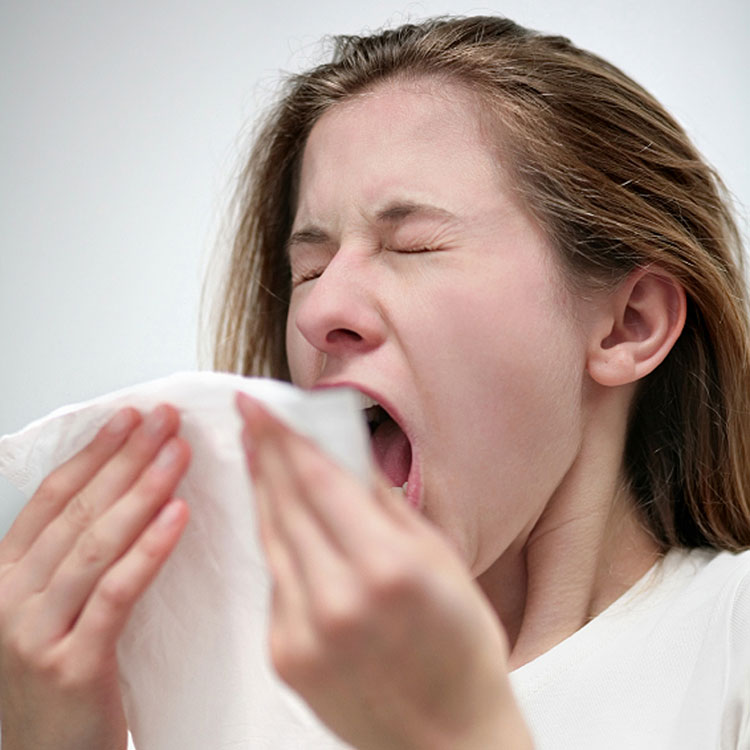By Jondi Gumz
With Covid deaths declining nationally and cases becoming milder, parents have a new question when their child has a cough, runny nose or fever: Is it Covid? Or flu? Which seemed to disappear last year. Or is it is RSV? That’s respiratory syncytial virus, a middle name so complicated it’s been shortened to initials.
All three are infections, and these infections are treated the same way: Rest and fluids.
Experts say nearly all children get RSV by age 2.
The good news is that most children recover from RSV on their own – but about 2% are hospitalized for bronchiolitis, infection of the small airways in the lungs, or pneumonia, lung infection.
Nationwide, hospitals admit nearly 60,000 children under 5 for RSV each year.
Dominican Hospital is seeing an average of 6 RSV cases per day in the emergency department. Last week, Dominican transferred two pediatric patients to the ICU at Lucile Packard Children’s Hospital Stanford, and admitted 5 pediatric patients.
As for flu, it causes a fever of 103 or 104 degrees. Children under age 2 are at higher risk for complications such as dehydration, sinus infections or pneumonia.
Covid can present with a very bad sore throat, difficulty breathing and headache.
Santa Cruz County reports 489 active Covid cases, declining since July, with a barely noticeable rise in wastewater data in the past two weeks, and 274 deaths, unchanged for a month.
The last seven deaths were people who were vaccinated, according to the county dashboard, all 65 or older with medical conditions.
The California Department of Public Health reports 6 patients hospitalized in Santa Cruz County with a positive Covid test, none in intensive care. There is no breakdown between adults and children.
Pajaro Valley Unified School District reports 71 active student cases and 10 staff cases. Aptos High has 3 student cases and one staff Aptos Junior High, one staff case, Mar Vista Elementary, 3 staff cases, Rio Del Mar elementary, 1 staff case and Valencia, 4 student cases.
The very contagious BA.5 and waning immunity from vaccines boosted summertime Covid cases.
Now the CDC estimates BA.5 comprised 29.7% of Covid cases as of Nov. 6, with new variants BQ.1.1 at 24.1%, BQ.1 at 20.1%, BF.7 at 7.8% and BA.4.6 at 5.5%.
The new bivalent boosters mix vaccine for the original no-longer circulating strain of SARS-CoV-2 and the previously dominant Omicron variants BA.4 and BA.5, which are far less deadly than the Delta variant.
As of Oct. 18, the state reported, 9% of eligible people had a booster. In Santa Cruz County, it was 14%.
The bivalent combo was expedited by federal officials who asked drug-makers to test on mice rather than humans. Pfizer submitted data based on 8 mice.
On Oct. 20, the Advisory Committee on Immunization Practices voted unanimously in favor of adding the Covid vaccine to the federal recommended immunization schedule for children and adults. The existing schedule recommends 27 doses of vaccine between birth and age 6.
Starting at 6 months, children should get the Covid vaccine, plus boosters, the committee said.
The committee heard Dr. Tom Shimabukuro report the death of a boy 13 days after his first dose of Pfizer Covid vaccine. The autopsy showed the cause of death was heart inflammation known as myocarditis; tests found no evidence of viral infection.
The death was reported to the federal Vaccine Adverse Effects Reporting System, and verified by the CDC. Committee members determined Covid vaccine benefits outweigh the risks.
In November, Israeli researchers evaluated vaccine effectiveness based on 460,000 people, concluding that because of rapid waning and a relatively small impact on transmission, it’s time to reassess future booster campaigns.
The federal Centers for Disease Control & Prevention plans to provide a recommended vaccine schedule in 2023.
The CDC said its recommendation is not a mandate.
“Local control matters,” Dr. Nirav Shah, director of the Maine Center for Disease Control and Prevention, said at the ACIP meeting. “We honor that the decision around school entrance for vaccines rests where it did before, which is with the state level, the county level and at the municipal level, if it exists.”
California’s SB 277 requires students be vaccinated to attend public school; no exemptions for personal belief. Homeschoolers are exempt.
The CDC stopped reporting Covid cases on Sept. 21, recognizing 95% of Americans 16 and up have some immunity, either from vaccination or infection.
In October, CDC Director Dr. Rochelle Walensky, up to date with her vaccines, tested positive for Covid twice, the second time after taking Pfizer’s Paxlovid. TV host Stephen Colbert and Dr. Anthony Fauci, the White House Covid advisor, had the same experience.
The California health department now gives Covid updates weekly, not daily, and Gov. Newsom plans to lift the state of Covid-19 emergency Feb. 28.
With the U.S. averaging 545 deaths a day, compared to 3,000 last winter when the Delta variant raged, there is no evidence the Omnicron subvariant causes more serious illness.
Santa Cruz County reported 49 Covid deaths after Omicron, compared to 225 as of Dec. 15, before Omicron.
According to the Santa Cruz Office of Education, cases in schools peaked at 4,407 on Jan. 27, and are now 148.
The 14-day positivity rate, 12.25% in January, is now 1.17%.
Local information: www.santacruzhealth.org/coronavirus or (831) 454-4242 from 8 a.m. to 5 p.m. Monday through Friday.

